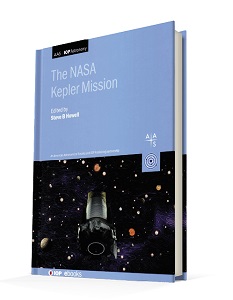While everyone has heard of the Hubble Space Telescope (HST), relatively few will be familiar with NASA’s Kepler mission, let alone the follow-on K2 mission performed by the same satellite. The authors of this book hope to change that because the two missions have made “fundamental, paradigm-changing advances in essentially every area of astrophysics and planetary science”.
The Kepler spacecraft was, in effect, a planet hunter. From its launch in 2009, it continuously monitored the brightness of some 170,000 stars to detect the tiny reductions in brightness caused by planets passing in front of them. As a result of this so-called transit method, it detected more than 5000 planetary candidates. Then, in 2013 when a second reaction wheel failed, a novel attitude control method was designed and initiated, giving the satellite a new lease of life. Figures at the time of this review – following the satellite’s retirement in 2018 - are more than 530,000 observations and over 2600 confirmed exoplanets.
Indeed, a section excitingly entitled, ‘There are more planets than stars’ reports that the Kepler mission revealed “the fact that planets outnumber stars in our Galaxy”. This is apparently because dwarf stars are more likely to have more planets than larger stars and “M-dwarfs comprise ~75% of the stars in the Milky Way”. It should be said, however, that the reported “fact” is more a result of logical extrapolation than confirmed observation and “remains an open question of research”, as the section sensibly concludes.
This book presents perhaps the ideal mix of technology and science content, the first section describing how the satellite and its payloads work, the second summarising the results. The former is sufficiently detailed to interest engineers, which is unusual for a science book, and the exposition of the revised attitude control method (“balancing a spacecraft using solar pressure”) is a case in point. Regarding the results, there are significant sections on exoplanets and stellar astrophysics with shorter sections on the solar system and extragalactic studies. Each chapter concludes with a copious list of references.
For a science text the book is quite well illustrated with colour photos and diagrams, integrated with the text, and of course there are the usual charts and graphs to illustrate the data. Although serious researchers and libraries should have a copy, a price point of $190 is likely to place the book beyond the pockets of most individuals.
Unfortunately there is more bad news: in common with the HST book in the same series [see ROOM #27, 2021], this volume employs the crazy system of numbering chapters individually, which benefits no one but the editors. However, a far more egregious editorial decision was to omit an index! That said, it means that the page-numbering system doesn’t really matter… because there is no effective method of finding any of the wonderful written content anyway!











